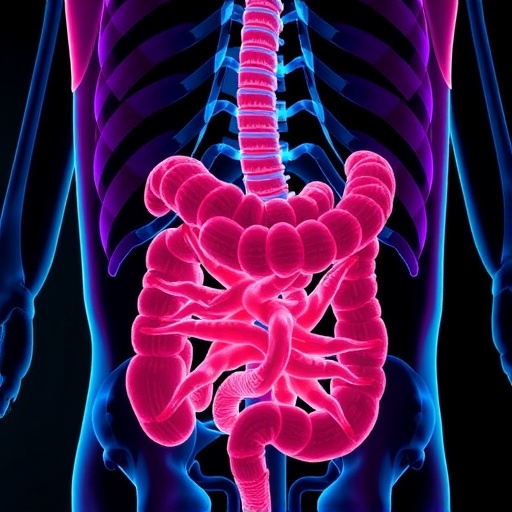
In an exciting development in the field of neuroscience, recent research has provided intriguing insights into the effects of subanesthetic doses of ketamine, a well-known anesthetic, on motor and cognitive functions. This study, conducted by Ilaghi and colleagues, presents a thorough investigation into how ketamine can modulate outcomes in a harmaline-induced model of essential tremor, emphasizing its role in influencing Lingo-1 and inflammatory pathways. The implications of this research are potentially groundbreaking, warranting a closer examination of ketamine’s pharmacological properties and its application in neurological disorders.
Essential tremor (ET) is a prevalent movement disorder characterized by involuntary and rhythmic shaking, particularly affecting the hands and arms. The debilitating nature of this condition can significantly impede daily activities and diminish the quality of life for those affected. Previous treatments have often been inadequate and come with considerable side effects, highlighting the urgent need for innovative therapeutic strategies. Ketamine, traditionally used in surgical settings due to its anesthetic properties, has recently gained attention as a potential treatment for various neurological and psychiatric conditions.
The research by Ilaghi et al. builds upon the premise that ketamine may offer neuroprotective effects, especially in the context of neuroinflammation and neuronal damage. The team utilized a rodent model induced with harmaline to simulate essential tremor, thereby allowing for a controlled assessment of motor and cognitive outcomes post-ketamine administration. In this experimental setup, the behavioral responses of the subjects were meticulously observed following the administration of subanesthetic doses of ketamine.
One of the remarkable findings of this study is the observable improvement in motor performance in treated subjects compared to those that received a placebo. The administration of ketamine appeared to reduce the frequency and intensity of tremors in the harmaline-induced model, suggesting a significant modulatory effect on tremor-related motor deficits. This outcome aligns with previous studies that hinted at ketamine’s potential to influence motor functions, raising questions about the underlying mechanisms at play.
The exploration of Lingo-1, a protein implicated in neuronal signaling and inflammation pathways, served as a focal point in this research. Elevated expressions of Lingo-1 have been correlated with various neurodegenerative processes, making it a compelling target for therapeutic intervention. The results from Ilaghi’s study demonstrated a reduction in Lingo-1 levels among subjects treated with ketamine, hinting at a possible pathway through which ketamine could exert anti-inflammatory and neuroprotective effects in the context of essential tremor.
In tandem with Lingo-1, the inflammatory pathways of the brain were closely scrutinized. Ketamine’s influence on pro-inflammatory cytokines presents a novel area of investigation. The findings suggested that the subanesthetic doses of ketamine could lead to decreased levels of certain inflammatory markers, further supporting the theory that ketamine has a multi-faceted impact on neuroinflammatory processes. This aspect is particularly significant given the emerging understanding that chronic inflammation may heavily contribute to the pathophysiology of essential tremor and other related disorders.
Cognitive outcomes were also assessed as part of the study, providing a comprehensive view of ketamine’s potential as a therapeutic agent. Anxiety and cognitive deficits often accompany movement disorders, and addressing these co-morbidities is crucial for improving overall patient outcomes. The results indicated improvements in cognitive flexibility and anxiety levels within the group receiving ketamine treatment, opening avenues for its application beyond motor symptoms.
As researchers delve deeper into the potential use of ketamine in treating essential tremor, the pharmacological nuances come to light. Ketamine is known to function predominantly as an NMDA receptor antagonist, with implications for glutamatergic signaling in the brain. This unique action could redefine therapeutic approaches in neurology, as altering glutamate transmission might pave the way for innovative interventions that target not only tremor symptoms but also chronic pain and depressive disorders frequently seen in patients with essential tremor.
The ethical implications surrounding off-label ketamine use, however, cannot be overlooked. While its therapeutic potential expands, careful consideration is warranted regarding its administration outside of traditional settings. The study by Ilaghi et al. showcases the promising horizons in exploring existing medications for new therapeutic applications, but it also emphasizes the need for continuing clinical trials and regulatory examination.
Furthermore, the research draws attention to the growing body of evidence regarding the benefits of precision medicine in neurological disorders. Individual variations in response to treatment could significantly affect outcomes, suggesting that personalized approaches may be the future of interventions like ketamine. Tailoring treatment plans based on genetic and biological markers could enhance efficacy and limit adverse effects, culminating in better patient care.
In summary, the groundbreaking findings from Ilaghi and colleagues catalyze a re-evaluation of ketamine’s role in neurotherapeutics, particularly concerning movement disorders such as essential tremor. The interplay between its effects on motor, cognitive, and inflammatory pathways presents a promising frontier in understanding and potentially treating debilitating neurological conditions. As further research unfolds, the implications of these findings may resonate throughout the field, ushering in a new era of treatment modalities that could improve the lives of countless individuals grappling with essential tremor and similar disorders.
This comprehensive exploration reaffirms the importance of continued investigation into established drugs for novel applications. The journey of ketamine from an anesthetic to a prospective treatment for essential tremor signifies a crucial paradigm shift in how we approach neurological disorders, marking an exhilarating time for neuroscientific research.
Subject of Research: Effects of subanesthetic dose of ketamine on motor and cognitive outcomes of harmaline-induced essential tremor model
Article Title: Effects of subanesthetic dose of ketamine on motor and cognitive outcomes of harmaline-induced essential tremor model: a focus on Lingo-1 and inflammatory pathways
Article References:
Ilaghi, M., Pirmoradi, Z., Esmaili, Z. et al. Effects of subanesthetic dose of ketamine on motor and cognitive outcomes of harmaline-induced essential tremor model: a focus on Lingo-1 and inflammatory pathways.
BMC Neurosci 26, 49 (2025). https://doi.org/10.1186/s12868-025-00966-4
Image Credits: AI Generated
DOI: 10.1186/s12868-025-00966-4
Keywords: ketamine, essential tremor, motor outcomes, cognitive outcomes, inflammation, Lingo-1, neuroinflammation, pharmacology, precision medicine, neurodegenerative disorders.
Tags: cognitive effects of ketamineharmaline-induced tremor modelIlaghi research on tremorinflammatory pathways in essential tremorinnovative treatments for movement disordersketamine and essential tremorketamine in neurological disordersLingo-1 modulation in tremorneuroinflammation and motor functionneuroprotective properties of ketaminepharmacological properties of ketaminesubanesthetic ketamine effects




